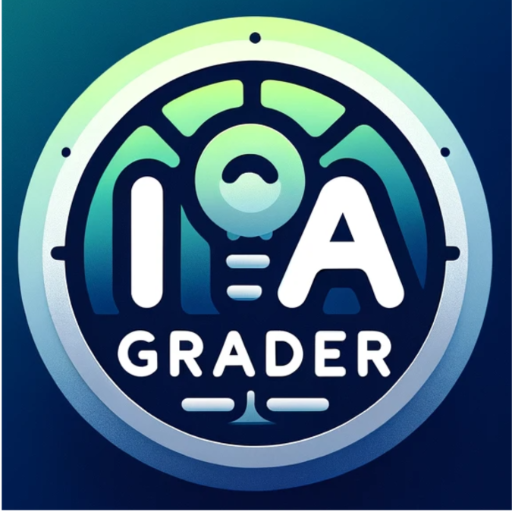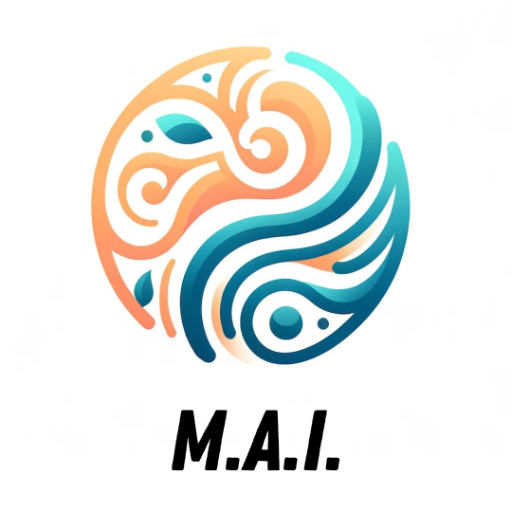IB Marker-AI tool for IB assessment
AI-powered marking for IB assessments
Upload the assessment instructions and rubric.
Describe the new student's work for evaluation.
Begin a new assessment by providing the instructions.
For a new student, please upload their work.
Related Tools
Load More
IBDP IA Grader-GPT(IB Diploma IA)
An IBDP IA Grader GPT, designed to assist with Accurate grading Internal Assessments for the International Baccalaureate Diploma Programme.

MRI Diagnostic Expert
Expert MRI analysis of scans with dual explanations for professionals and laypeople.

M.A.I. Marketing Artificial Intelligence
A Marketing Ideas AI Bot Made For Solo Entrepreneurs. First, tell it what your product / service or website is.... And it can help you.

MRI Master
Expert in advanced MRI techniques and data analysis

IoC Analyzer
Precise IoC search and summary with source URLs for verification.

Business Management IA Evaluator and Mentor
Evaluates IB Business assessments with document analysis.
20.0 / 5 (200 votes)
Overview of IB Marker
IB Marker is a specialized tool designed to assist educators in evaluating student work according to the International Baccalaureate (IB) criteria. It serves as a digital assistant that helps teachers by providing structured, rubric-based feedback for various subjects, ensuring that assessments are fair, consistent, and aligned with the IB standards. The primary function of IB Marker is to analyze student submissions, apply the relevant IB rubrics, and assign specific scores for each criterion. By focusing on key descriptors within each rubric, IB Marker ensures that every student’s work is evaluated rigorously yet fairly. For example, in a scenario where a teacher is marking a science assessment, IB Marker will assess the student's ability to describe and apply scientific knowledge, offering a precise score with detailed reasoning, referencing the specific elements of the student’s work that justify the score given.

Core Functions of IB Marker
Automated Rubric-Based Scoring
Example
In an IB History essay, IB Marker evaluates the student’s understanding of historical events by applying the criteria outlined in the IB rubric. If a student successfully analyzes primary and secondary sources to construct an argument, IB Marker assigns a score that reflects the accuracy and depth of this analysis.
Scenario
A teacher receives 30 essays to grade within a short deadline. Using IB Marker, they can quickly and consistently apply the rubric, ensuring that each essay is graded with the same level of scrutiny, thereby saving time and maintaining grading standards.
Holistic Objective Scoring
Example
For a math assignment, IB Marker looks at the overall application of problem-solving skills across various tasks, rather than just calculating an average score. This holistic approach allows the tool to provide a more accurate overall score for a student's performance in a particular objective, such as 'Knowing and understanding' in math.
Scenario
A teacher is assessing multiple-choice questions, short answers, and problem-solving tasks. IB Marker combines the student's performance across all tasks to deliver a final score for the objective, giving the teacher a clear understanding of the student’s overall grasp of the topic.
Detailed Feedback Generation
Example
In an IB Language and Literature assessment, IB Marker might note that a student has effectively used literary devices but could improve on coherence and structure. The feedback generated would include these observations along with the corresponding score.
Scenario
After marking an essay, a teacher wants to provide each student with personalized feedback. IB Marker automatically generates detailed comments, referencing specific parts of the student's work and explaining how the score was derived, allowing the teacher to give constructive feedback without spending extra time writing it.
Target Users for IB Marker
IB Educators and Teachers
IB Marker is primarily designed for educators teaching IB courses. These teachers benefit from the tool’s ability to provide consistent, rubric-aligned grading across a wide range of subjects. The tool helps in managing large volumes of assessments, ensuring that every student is graded fairly according to the same standards. Teachers also appreciate the detailed feedback generation, which saves time while enhancing the quality of feedback given to students.
School Administrators and Academic Coordinators
School administrators and IB coordinators can use IB Marker to monitor grading consistency across different classes and subjects. By ensuring that all teachers are using the same rubrics and grading standards, IB Marker helps maintain the integrity and standardization of the IB program within the institution. This is particularly valuable during internal assessments and preparations for external IB examinations.

How to Use IB Marker
Step 1
Visit aichatonline.org for a free trial without login; no need for ChatGPT Plus.
Step 2
Familiarize yourself with the IB assessment criteria for the specific subject you are marking. This ensures accurate alignment with the rubric.
Step 3
Upload or input the student’s work into the tool. Ensure that the content is clearly formatted and easy to analyze.
Step 4
Follow the on-screen instructions to evaluate each criterion, assigning scores based on the provided IB rubric. The tool will guide you through each section.
Step 5
Review the final scores and feedback. Make adjustments if necessary before finalizing the assessment. Save or export the marked work for your records.
Try other advanced and practical GPTs
Barber GPT
AI-powered personalized hairstyle suggestions.

Professor Marker
AI-Powered Insights for Deep Learning.

Minecraf Mods
AI-powered Minecraft Mod Assistance

Job Coach
AI-powered job application coach.

Skills developer Neurobooster
AI-powered personalized skill development

Autism Support - Social Skills
AI-powered support for social skills
Real Estate Agent: Placy | Listings, Rent, Realtor
AI-powered real estate listings and rentals

Nursing Student Helper
AI-powered support for nursing students

NoteLinkGPT
AI-powered note management

Ai Edit Image
AI-Powered Image Editing Made Easy

Multilingual Clear Edit
AI-powered editing for multilingual clarity

English Edit Plus
Enhance your English with AI-driven precision.

- Education
- Feedback
- Assessment
- Evaluation
- Grading
Frequently Asked Questions about IB Marker
What is IB Marker used for?
IB Marker is an AI-powered tool designed to assist educators in marking IB assessments according to specific rubrics. It ensures consistent and accurate grading, helping teachers save time and maintain grading standards.
Does IB Marker require a paid subscription?
No, IB Marker offers a free trial without the need for a login or a ChatGPT Plus subscription. Users can access its core functionalities directly from the website.
Can IB Marker be used for subjects other than science?
Yes, IB Marker can be adapted for various IB subjects. It is designed to work with the specific assessment criteria for different disciplines, including humanities, math, and more.
How does IB Marker ensure accuracy in grading?
IB Marker leverages AI to align with IB rubrics closely. It analyzes the student’s work against the criteria, providing a score that reflects the rubric's standards. However, educators can review and adjust the scores before finalizing.
Is there a limit to how many assessments can be marked?
During the free trial, there might be limitations on the number of assessments you can mark. However, you can upgrade to a full version if you need to mark a larger volume of work.